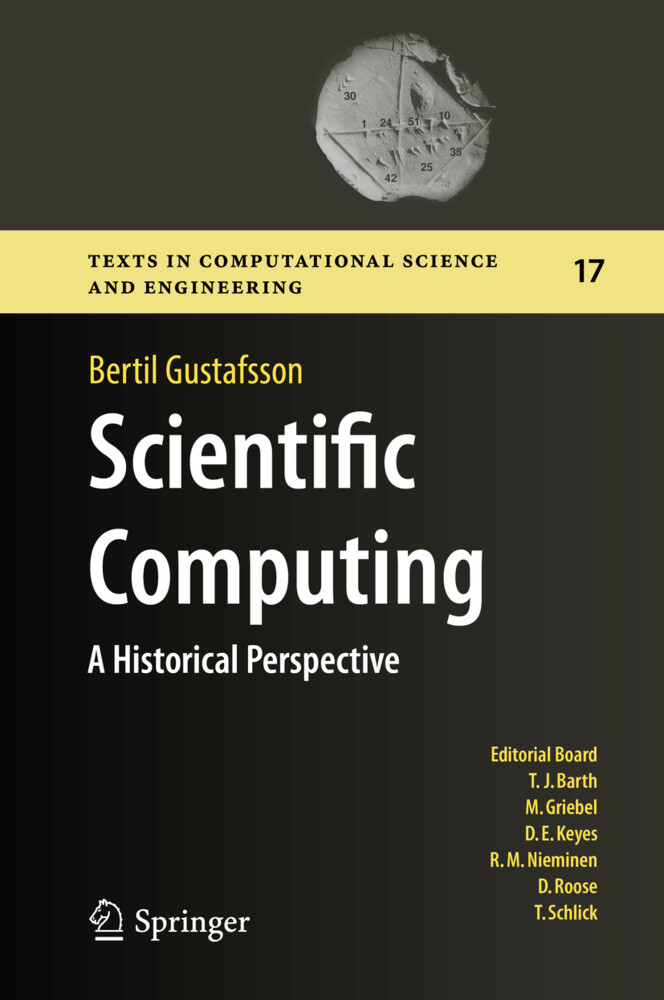
Zustellung: Mo, 27.01. - Do, 30.01.
Versand in 1-2 Wochen
VersandkostenfreiBestellen & in Filiale abholen:
This book explores the most significant computational methods and the history of their development. It begins with the earliest mathematical / numerical achievements made by the Babylonians and the Greeks, followed by the period beginning in the 16th century. For several centuries the main scientific challenge concerned the mechanics of planetary dynamics, and the book describes the basic numerical methods of that time.
In turn, at the end of the Second World War scientific computing took a giant step forward with the advent of electronic computers, which greatly accelerated the development of numerical methods. As a result, scientific computing became established as a third scientific method in addition to the two traditional branches: theory and experimentation.
The book traces numerical methods' journey back to their origins and to the people who invented them, while also briefly examining the development of electronic computers over the years. Featuring 163 references and more than 100 figures, many of them portraits or photos of key historical figures, the book provides a unique historical perspective on the general field of scientific computing - making it a valuable resource for all students and professionals interested in the history of numerical analysis and computing, and for a broader readership alike.
Inhaltsverzeichnis
1 Scientific Computing, an introduction. - 2 Computation far back in time. - 3 The centuries before computers. - 4 The beginning of the computer era. - 5 The establishment of scientific computing as a new discipline. - 6 Impact of numerical analysis and scientific computing. - References.
Produktdetails
Erscheinungsdatum
12. Oktober 2018
Sprache
englisch
Auflage
1st ed. 2018
Seitenanzahl
276
Reihe
Texts in Computational Science and Engineering
Autor/Autorin
Bertil Gustafsson
Verlag/Hersteller
Produktart
gebunden
Abbildungen
XIII, 262 p. 84 illus., 31 illus. in color.
Gewicht
582 g
Größe (L/B/H)
241/160/21 mm
Sonstiges
HC runder Rücken kaschiert
ISBN
9783319698465
Entdecken Sie mehr
Pressestimmen
The book evolves like a numerical course where the historical aspects are somewhat expanded at the expense of the numerical issues, but the main formulas and ideas are there. The numerics are however too thin to be useful as lecture notes for a course on numerical analysis. Therefore the book can only serve as additional literature to accompany a true course about the numerics. (Adhemar Bultheel, European Mathematical Society, euro-math-soc. eu, March 20, 2019)
Bewertungen
0 Bewertungen
Es wurden noch keine Bewertungen abgegeben. Schreiben Sie die erste Bewertung zu "Scientific Computing" und helfen Sie damit anderen bei der Kaufentscheidung.










